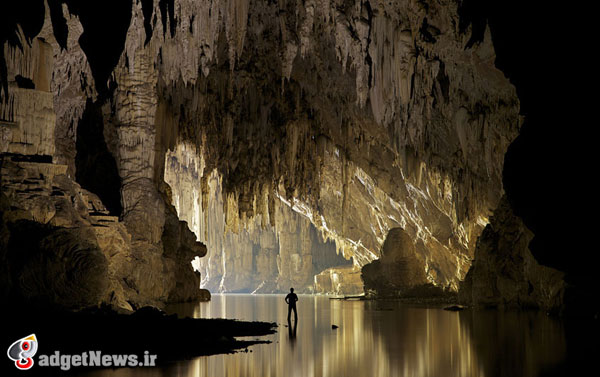
تصاویری که از غارهای زیر میبینید، دکور یک فیلم علمی تخیلی نیستند. اتفاقاً میشود آن ها را در جاهایی فراموششده از آسیا، امریکای شمالی و اروپا یافت. برخی از این غارها از تراوش آب به درون صخرههای آهکی ایجاد شدهاند. بدینترتیب، سنگهای آهکی ذرهذره در آب حل میشوند و ترکها و شکافهایی ایجاد می گردد. زایش این غارهای زیبا، حاصل روندی چند میلیون ساله از این اتفاق است. برخی دیگر از غارها، از سایش چندین میلیون سالهی آبهای دریاچه یا دریا ایجاد شدهاند.
از میان این غارهای شگفتانگیز، برخی از آنها به روی عموم باز است. برای کشف زیباییهایی که طبیعت در این غارها به ودیعه نهاده، نیاز به ابزارهایی ویژه هم هست. در میان گروههای اکتشافی، عکاسهای ماهری هم بودنهاند که زیباییهای این گوشههای ناشناختهی جهان را برای ما به تصویر بکشند.
– غار سُندونگ در ویتنام. این غار، بزرگترین غاری است که تا اکنون در جهان شناخته شدهاست. در این غار اکوسیستمهایی منحصر به فرد، جریانهای آبی و اشکال هندسی بینظیری به چشم میآید.


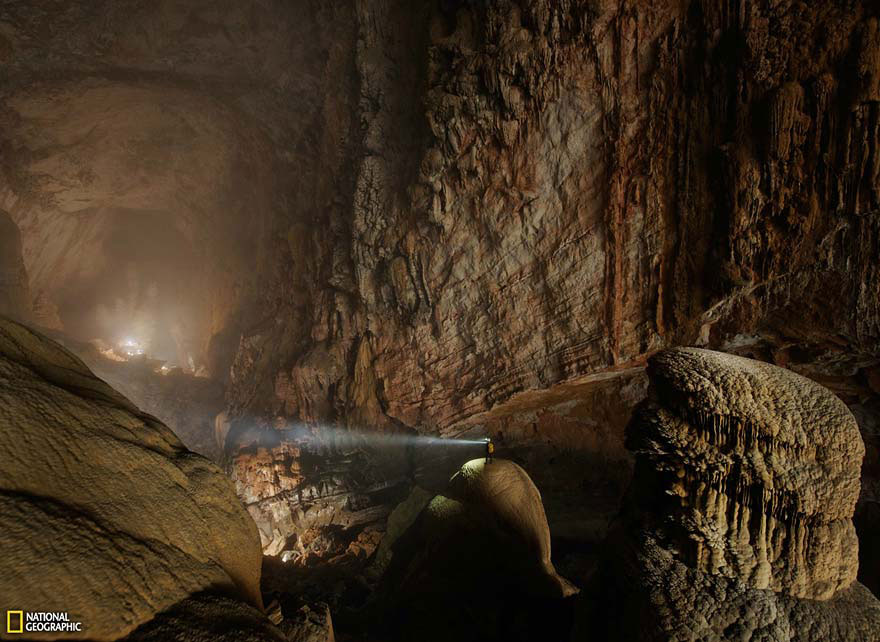

– غار یخی نزدیک به آتشفشان موتنووسکی در روسیه. غارهای یخی اینچنین، در یخچالهای طبیعی اطراف آتشفشان موتنووسکی در روسیه شکل میگیرد. عامل ایجاد برخی از آنها، دریچههایی است که حرارت و گازهای آتشفشانی را آزاد میکنند و به «فومارولها» موسومند.

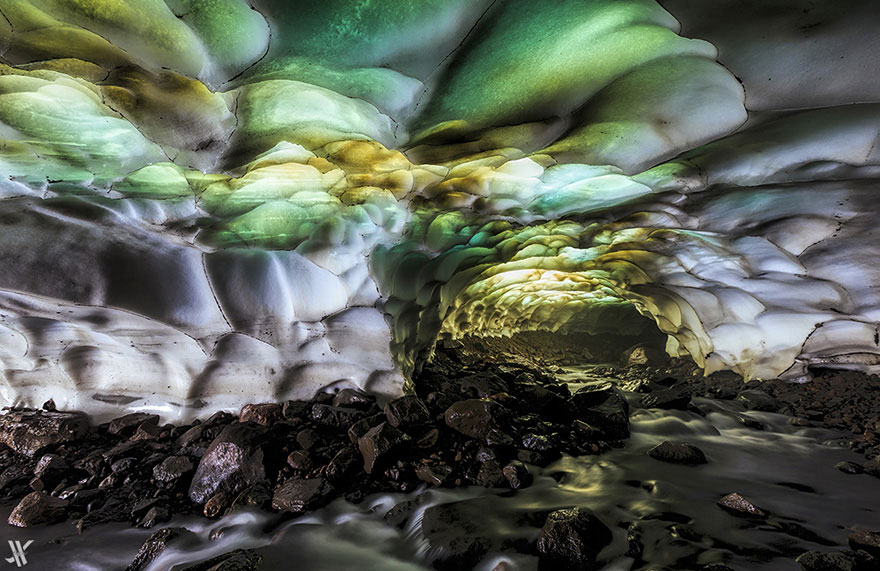
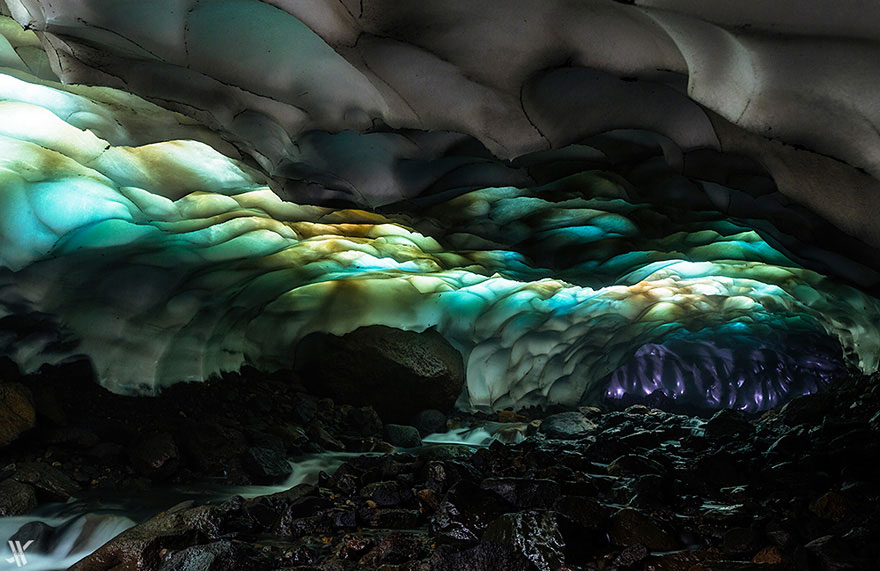
– معدن نایکا در مکزیک. این غار، خانهای برای بزرگترین کریستالهایی است که تا کنون دیده شدهاند. به دلیل عمق، حرارت و برخی مشکلات دیگر، این غار برای بازدید عمومی بسته است.
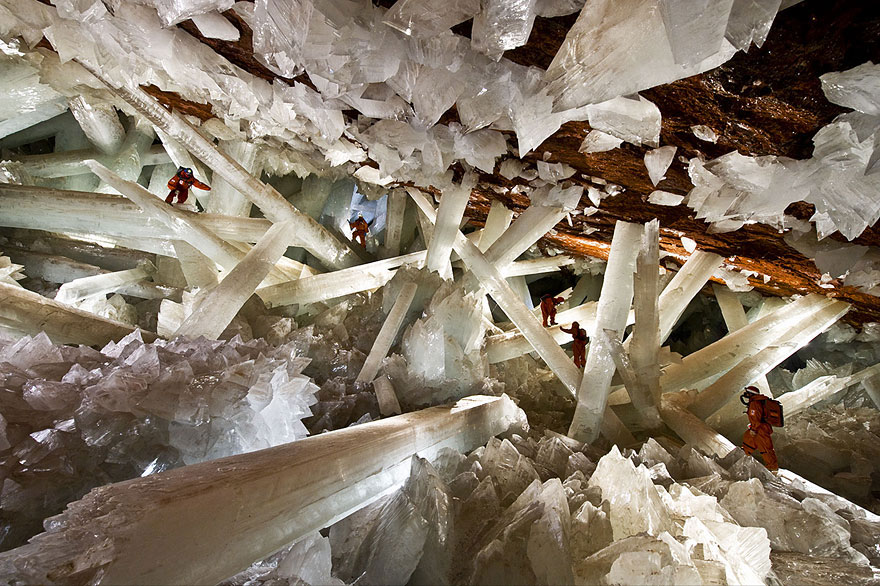

– غار یخچالی واتناجوکول در ایسلند. این یخچال، بزرگترین یخچال طبیعی اروپ محسوب میشود. این نوع غارها، به دلیل آب شدن برخی از قسمتهای یخچال ایجاد میگردد، اما باید دانست به دلیل شکنندگی و احتمال ایجاد تغییر در شکل یخچالها، این غارها خطرناکند.
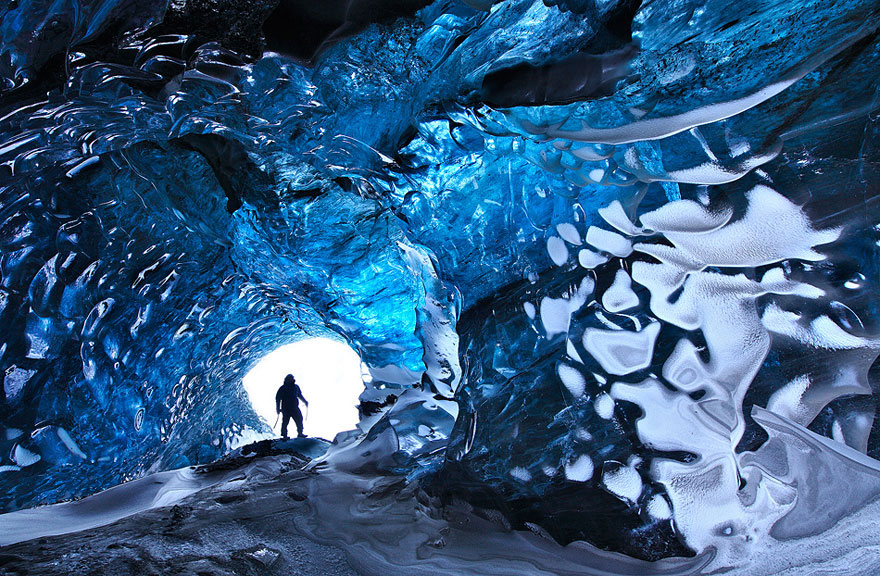

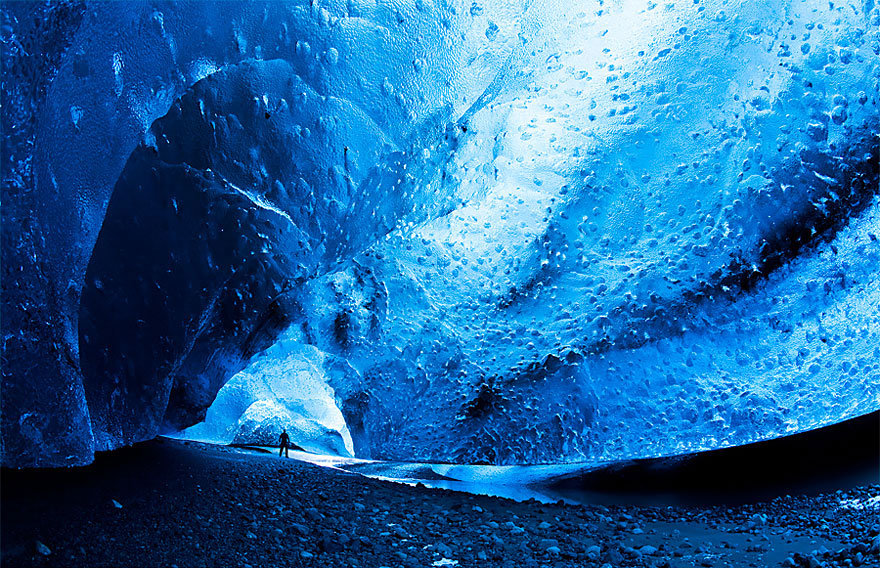
– غارهای باتو در مالزی. این غارها، توسط مهاجران انگلیسی، چینی و مردم محلی مورد استفاده قرار میگرفت. این غار، جزو غارهایی است که بازدید آن برای عموم آزاد است.
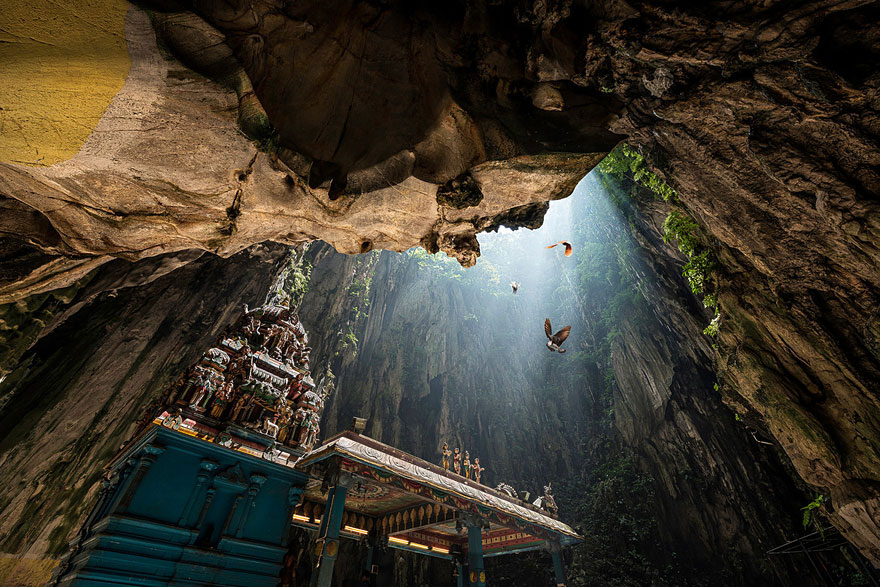
– غار یخچالی مندنهال در آمریکا. این غار در آلاسکا قرار دارد. به دلیل تغییر شکل همیشگی یخچال ها، معلوم نیست این غار زیبا چقدر دیگر باقی بماند.
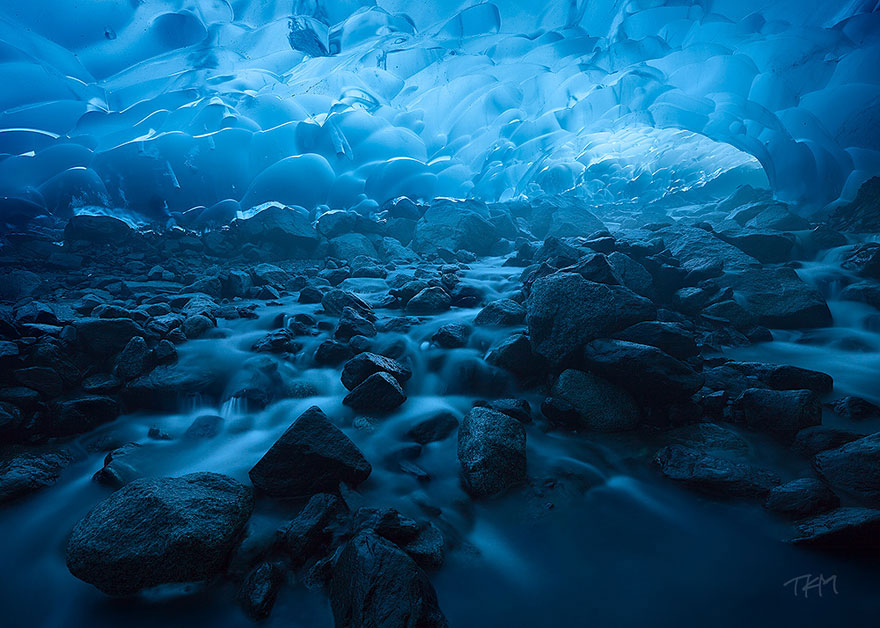
– غاری در آلگاروهی پرتغال. سنگهای این غار تقریباً در آب محلولند.
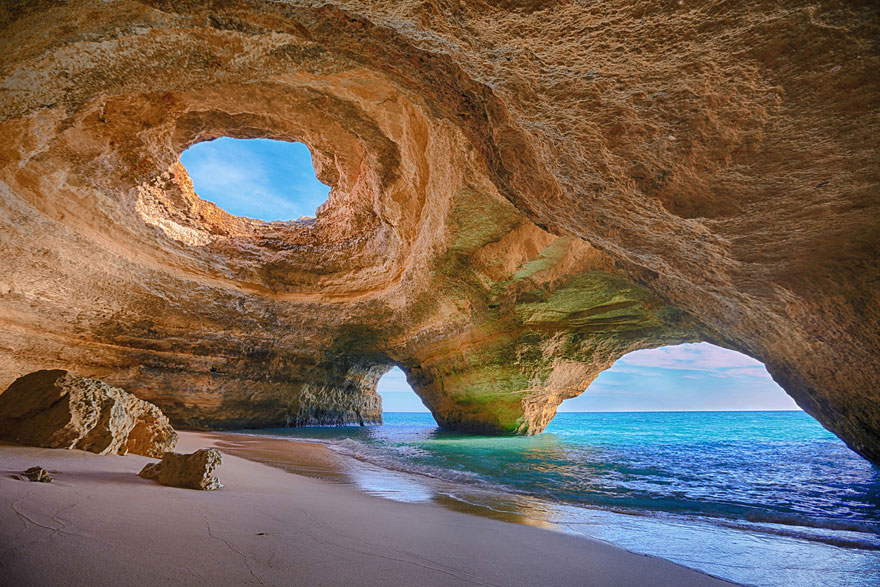
– غار کرمهای شبتاب در نیوزلند. نوع خاصی از کرمهای شبتاب که در این غار ساکن شدهاند، نمایی بسیار بینظیر به این غار بخشیدهاند.
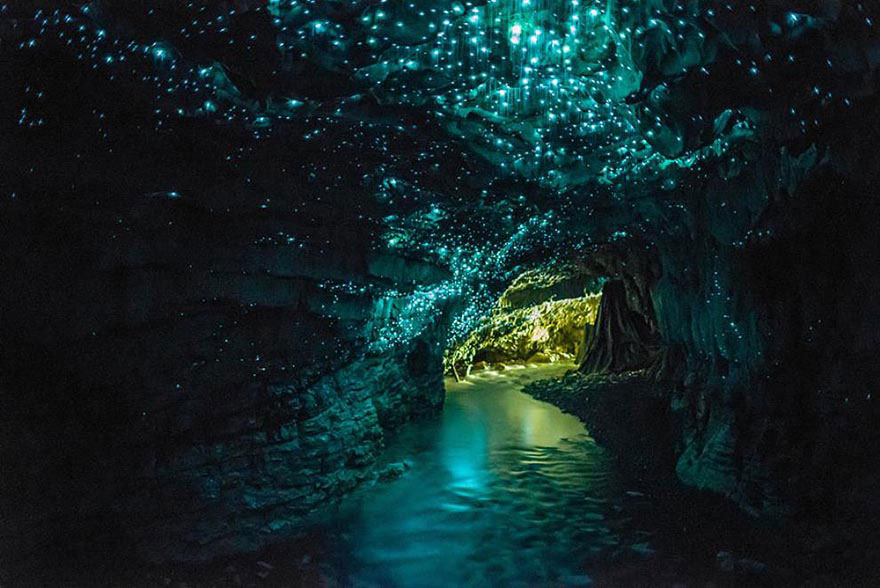
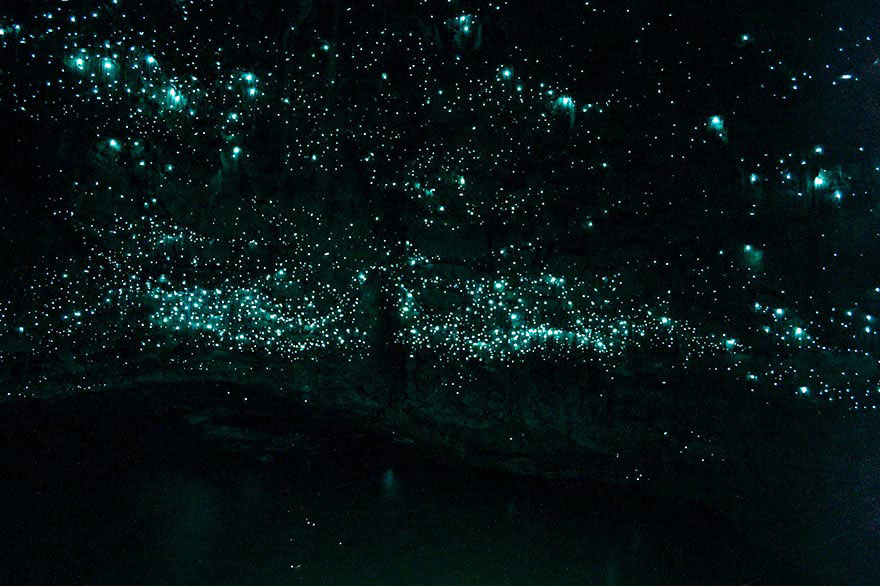

– غار ثاملود در تایلند. این غار در شمال تایلند قرار دارد. رود ناملاگ وارد این غار میشود. استالاگمیتها و استالاکتیتهای زیبایی در این غار وجود دارند.

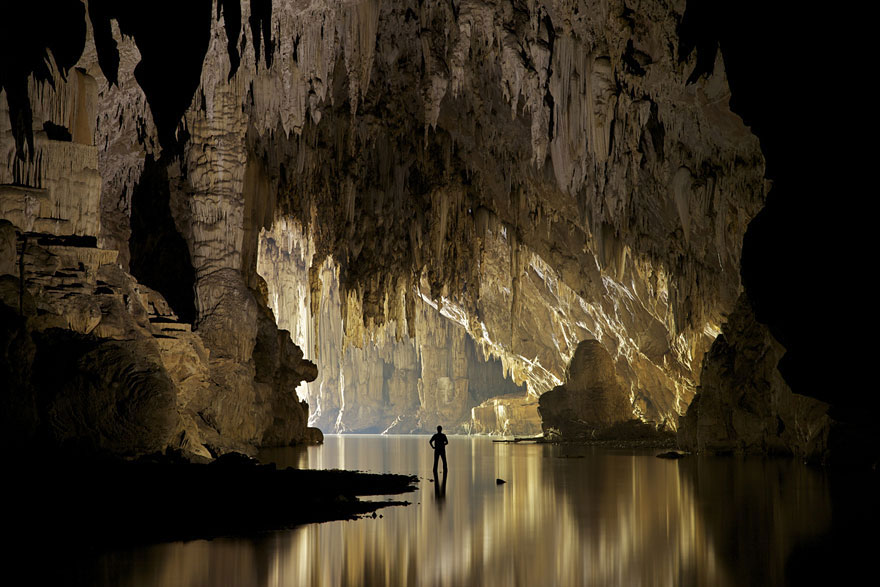
– غار کیائوت سائه در میانمار. درون این غار معبدی بودایی قرار دارد و اطلاعات چندانی دربارهاش در دست نیست.

– غارهای ماربل در پاتاگونیا. این غار بهخاطر بازتابهایی زیبا از آب بر روی سنگهای آن و نیز شکلهای محرابوار کلیساییاش معروف است.

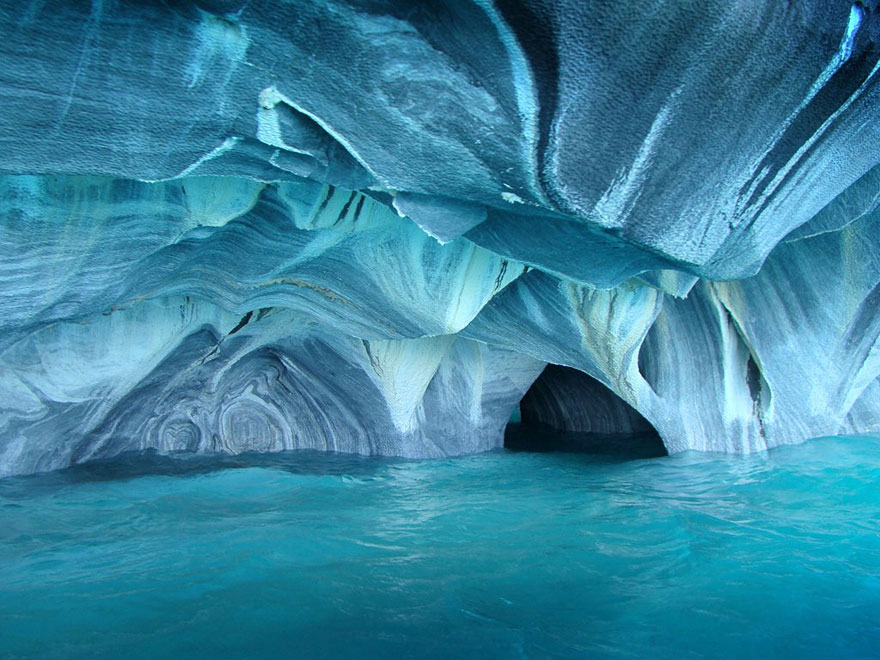
– درهی آنتلوپ در آمریکا. این غارها در آریزونا طی بادهایی چندین هزارساله و جریانهای سریع آبی ایجاد شده. در برخی فصلهای سال، ممکن است سیلهایی شدید در این دره رخ دهد. فیلم ۱۲۷ ساعت را به یاد آورید.
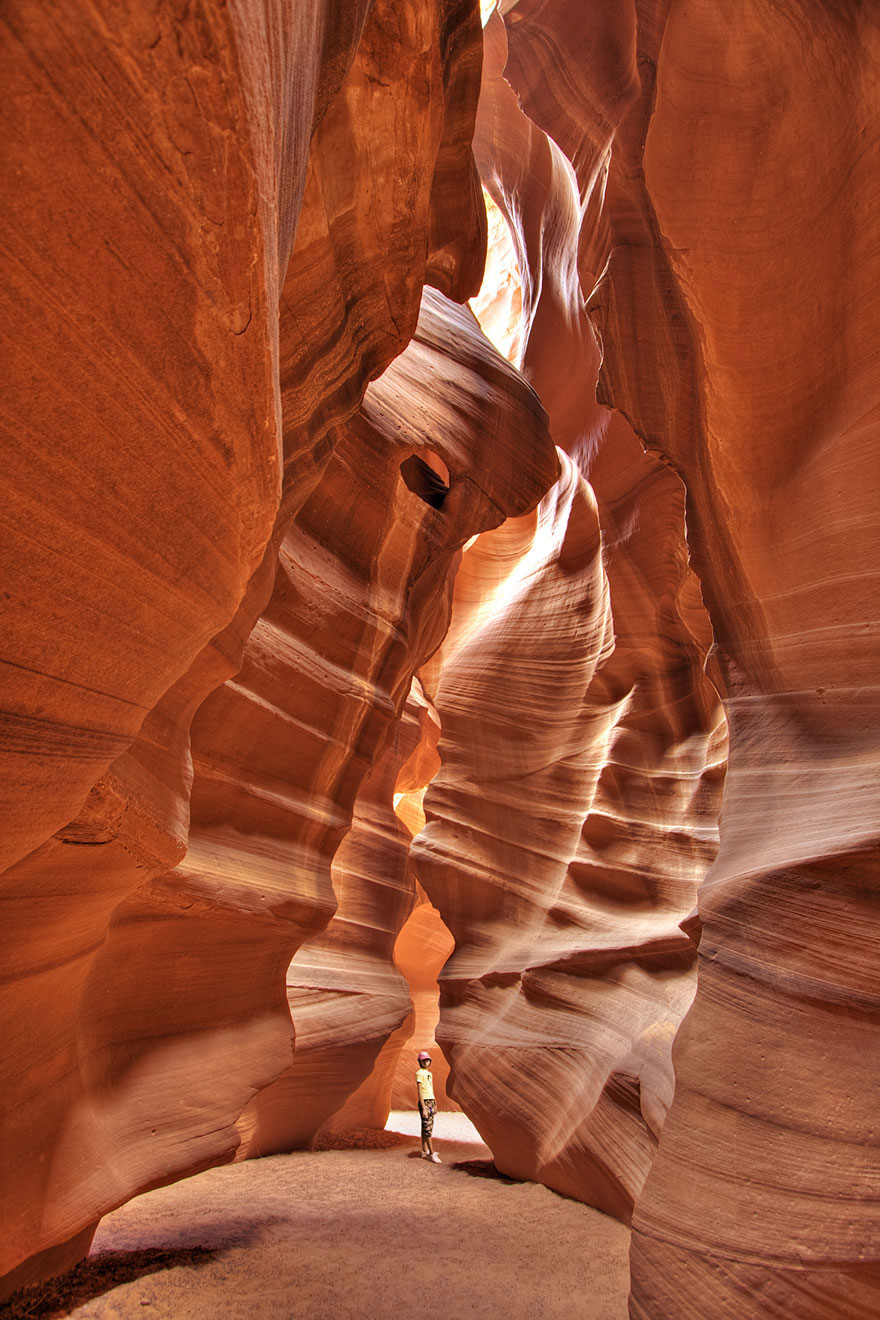
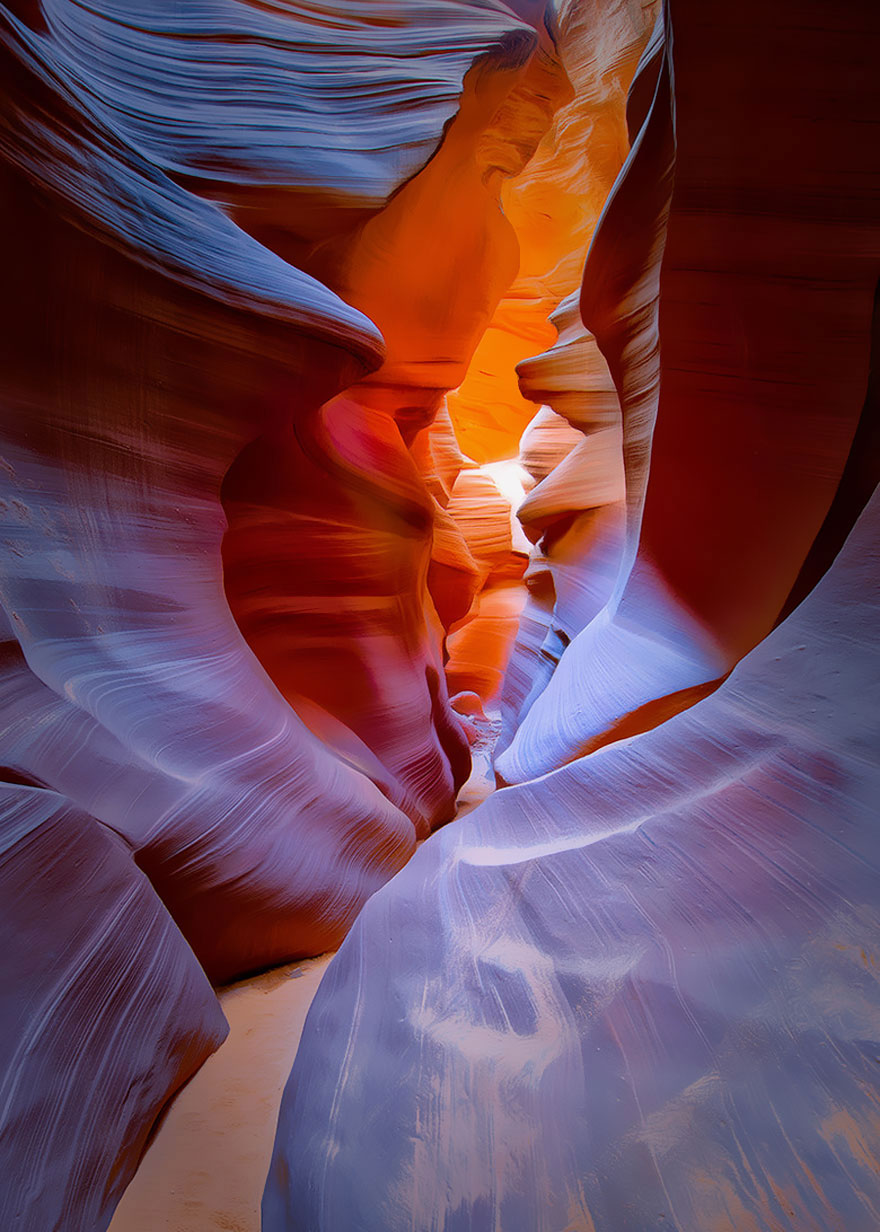
– غار فاریا ناکن در تایلند. این غار از قدیم نزد حاکمان محلی بسیار محبوب بوده، بنای میان این غار توسط حاکمی به نام چولالونگکورن در سال ۱۸۹۰ ساخته شدهاست.


– غار الیسون در آمریکا. برای غارنوردهایی که از آویخته شدن به طناب لذت میبرند، مکانی هیچانانگیز است!
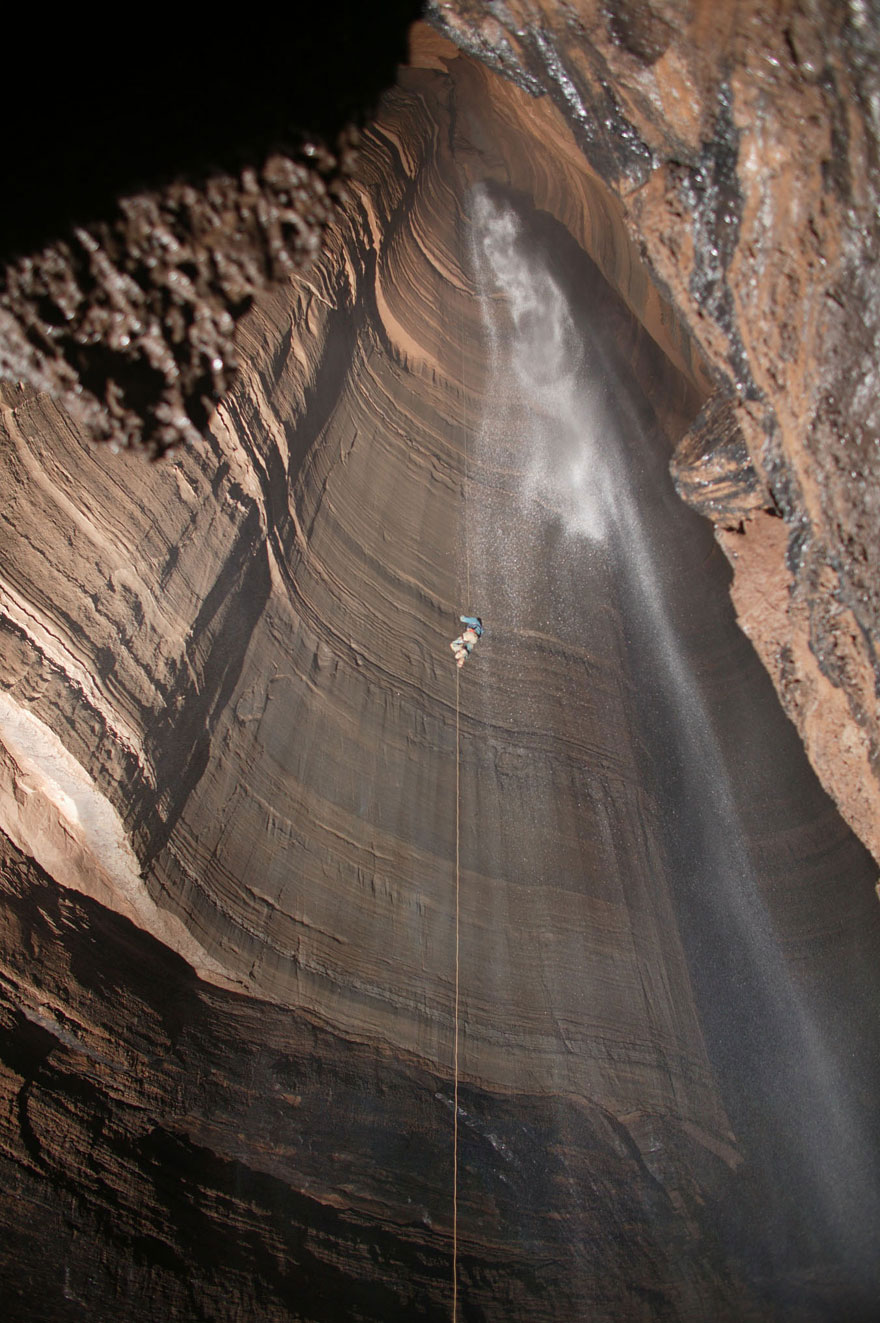
– غار فلوت نی در چین. این غار در ایالت گوانگخی چین قرار دارد و اقلاً از ۱۲۰۰ سال قبل کشف شدهاست. استالاگمیتها و استاکتیتهای بیبدیلی در این غار یافت میشوند. در دهانهی این غار نِیهایی میروید که میتوان از آنها فلوت ساخت.


منبع : boredpanda
15 Of The Most Majestic Caves In The World
These stunning caves aren’t part of some fairy-tale world or horror movie – they can be found in some of the world’s most remote places in Asia, North America and Europe.
Some of these caves form when water seeps down through cracks in limestone rock. The limestone rock dissolves into the water bit by bit, forming cracks and openings. Over millions of years, these openings, and the limestone left behind by dripping water, can form the majestic caves you see here.
Other caves were formed over millions of years by being gradually worn away by lake or sea water.
If you’re thinking of rushing off to visit one of these caves, hold your horses. Although some of the caves are open for public, like Phraya Nakhon Cave in Thailand, the majority of them are only open to extreme adventurers who have to get their passes in advance. As you can see from the pictures below, the people who get the chance to explore these natural beauties are equipped with some special equipment.
Fortunately for us, almost all expeditions to the caves are joined by professional photographers. Their precious photo shoots allow us to learn about those mysterious places on Earth that are still untouched by humankind.
1. Son Doong Cave, Vietnam
The Son Doong cave in Vietnam is the largest currently known cave in the world. It is filled with countless wonders including isolated ecosystems, weather systems and geological formations
2. Ice Cave Near The Mutnovsky Volcano, Russia
Ice caves like these form in the glaciers surrounding the Mutnovsky Volcano in Russia. Some of them are formed by vents that release volcanic heat and gases called fumaroles.
3. Naica Mine, Mexico
The Naica Mine caves in Mexico are home to some of the largest crystals ever seen. The Crystal Cave, where these crystals are located, is closed to the public because of its depth, heat and other issues. However, plenty of pictures have been taken to document this monumental crystal cavern.
4. Vatnajokull Glacier Cave, Iceland
This cave is located in Iceland’s Vatnajokull Glacier, the largest glacier in Europe. Caves like these form due to melting glacial icewater, but they can be dangerous because glaciers are constantly breaking and changing.
5. Batu Caves, Malaysia
The Batu Caves in Malaysia have been used by English and Chinese settlers as well as the indigenous Temuan people. The bat guano in the cave was mined for agricultural purposes, but now the cave is filled with statues and is open to visitors.
6. Mendenhall Glacier Cave, USA
This ice cave is part of the Mendenhall Glacier near Juneau, Alaska. The spectacular cave was carved out of the glacier by melting icewater. Due to the ever-changing conditions at glaciers, it is unclear whether this cave will still be around for long.
7. Cave in Algarve, Portugal
The Algarve region in Portugal, where this cave is located, is prone to various seaside formations because of the rock face’s relative solubility in water. This specific cave near Lagos is accessible only by water.
8. Glowworms Cave, New Zealand
The Waitomo glowworm caves in New Zealand are home to a unique insect – the glowworm. This insect hangs glistening silken strands from the ceiling of the cave and glows to attract unsuspecting prey. To read more about this fascinating and unique ecosystem, check out our post about the Waitomo caves.
9. Tham Lod Cave, Thailand
The Nam Lang river runs through the Tham Lod cave in northern Thailand. The cave is filled with beautiful stalactites and stalagmites and is home to hundreds of thousands of Pacific swifts that have adapted to spend parts of their lives in caves.
10. Kyaut Sae Cave, Myanmar
Very little is known about this cave in Kyaut Se, Myanmar, other than that the inside has been fitted as a Buddhist temple.
11. Marble Caves, Patagonia
The Marble Caves in Patagona are known for the spectacular reflections that the turquoise water casts on the white marble ceiling of the cave. They are also called the Marble Cathedral because of their beautiful and arching forms.
12. Antelope Canyon, USA
Antelope Canyon in Arizona was carved out by thousands of years of persistent wind and flash floods, which is why its smooth walls look so smooth and fluid. During the desert’s monsoon season, dangerous flash floods can occur without warning from rains that have fallen miles away. These flash floods have taken the lives of quite a few unwary tourists.
13. Phraya Nakhon Cave, Thailand
The Phraya Nakhon Cave in Thailand was historically a popular visiting place for local kings because of the illumination provided by the collapsed roofs. The pavilion in the center was built for the visit of King Chulalongkorn in 1890.
14. Ellison’s Cave, USA
This is the Fantastic Cave pit, part of Ellison’s Cave in Georgia, U.S.A. It is a popular attraction for pit cavers – those who enjoy rappelling down vertical subterranean drops.
15. Reed Flute Cave, China
The Reed Flute Cave in Guangxi, China has been visited by tourists for at least 1200 years. The cave is home to a spectacular array of stalagmites and stalactites. It is named for the reeds that grow at its mouth, which can be made into flutes.
 گجت نیوز آخرین اخبار تکنولوژی، علم و خودرو
گجت نیوز آخرین اخبار تکنولوژی، علم و خودرو 





